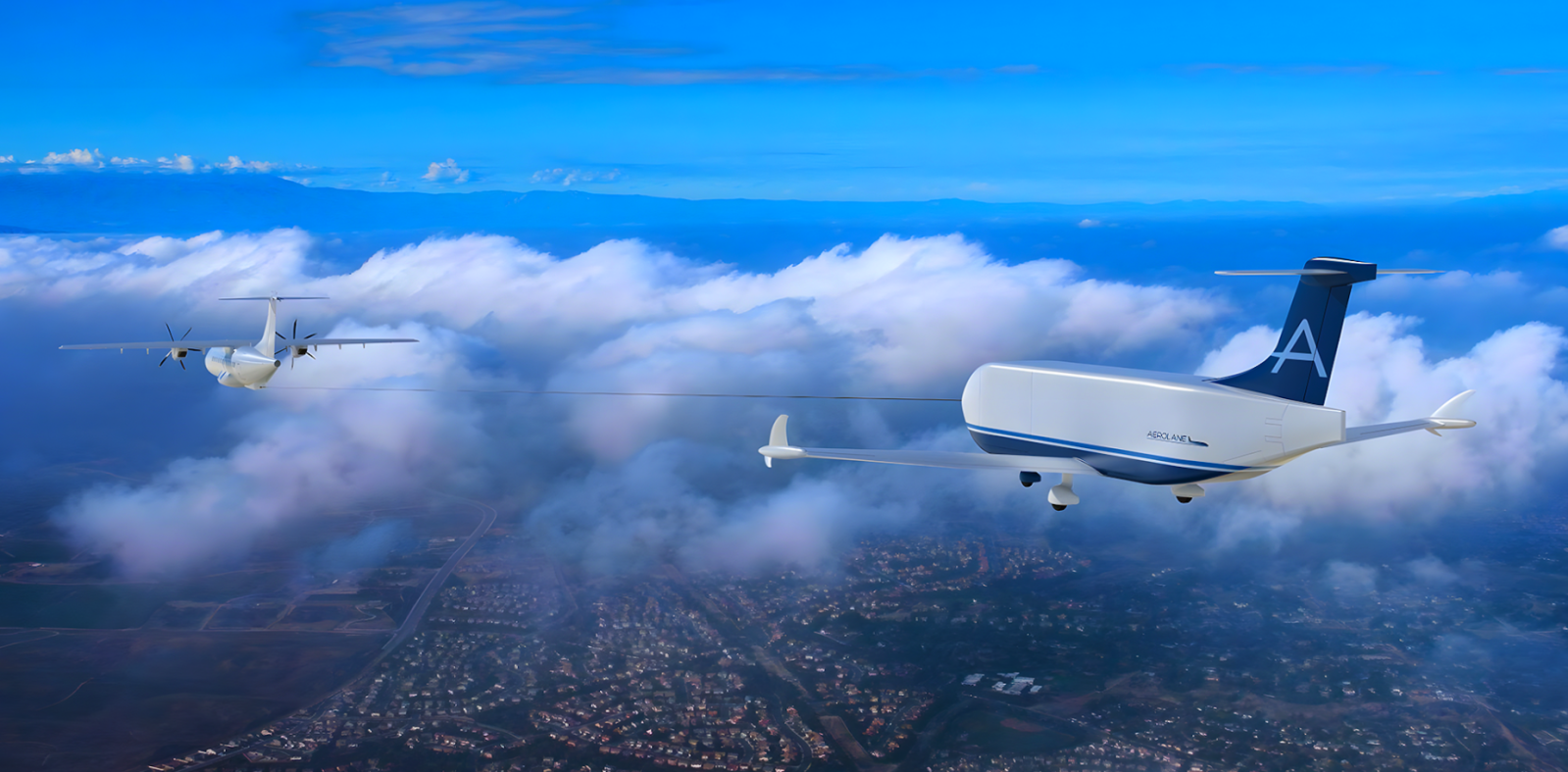Follow us on Google News (click on ☆)

This idea is not new, dating back to the gliders used during World War II to deploy troops and equipment near combat zones. However, those operations were risky, with gliders often being abandoned after their forced landing. Aerolane aims to modernize this concept by using autonomous gliders capable of safely landing on dedicated runways, thereby avoiding the risks associated with improvised landings.
With this approach, costs would be significantly reduced, as the gliders would lack propulsion systems, fuel, and cockpits. These pilotless planes could also greatly increase payload capacity, doubling or even tripling that of traditional transport aircraft.
The AeroCarts would be towed by tow planes, then remain attached to a rope throughout the cruising phase, exploiting the wake of the lead plane to minimize drag and optimize lift. However, regulatory challenges remain, particularly concerning the requirements for landing on conventional runways, which will require discussions with aviation authorities.
Explanatory video (in English)
Despite these hurdles, Aerolane is progressing with functional prototypes, equipped with autopilots and engines for current testing. The goal is to develop larger operational models capable of transporting up to ten tons (approximately 22,000 pounds) of freight, with availability expected by 2025.
This ambitious initiative could be a game-changer in the air freight transport sector, offering an eco-friendly and economical alternative to meet the growing demand for fast delivery while reducing industry costs and carbon footprint.